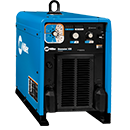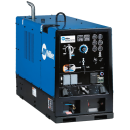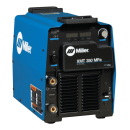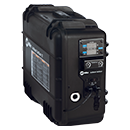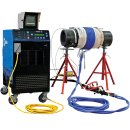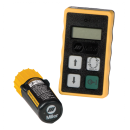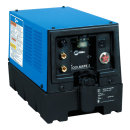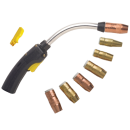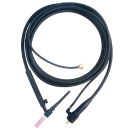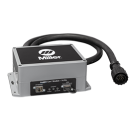Remote Control Technology - Reduces Downtime, Improves Productivity & Safety
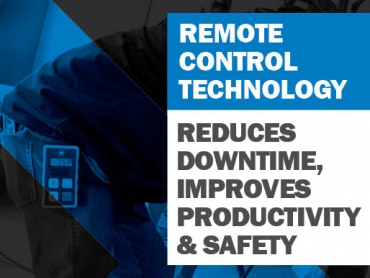
Companies are always looking for ways to become more competitive, productive and profitable. Accurately bidding on jobs, having the right equipment and skilled welding operators, and completing projects on deadline are all imperative to reaching those goals. Safety on the jobsite is also absolutely critical.
Remote control technology can implement efficiencies, ensure greater safety along with other significant benefits. This technology is especially beneficial for industries where a welding operator is not welding next to the power source, such as construction and shipbuilding industries, where welding can take place hundreds of feet in the air or far away from the power sources.
Miller remote technology and their benefits
Miller’s remote foot and hand control gives welding operators the ability to set welding parameters at the weld joint, which reduces the need to walk back and forth to the power source to make adjustments. This also provides more time to weld and eliminates the need to settle for less-than-optimal welding parameters, resulting in better welds and less rework.
Miller’s controls are completely wireless and requires no additional cords, reducing cable management by 33 percent. Plus, because the controls are wireless it reduces the need to purchase, repair or maintain expensive cords, saving you money.
With Millers wireless controls there are no line-of-sight limitations, as the weld cables provide the remote control capability as opposed to radio waves, which can be disrupted by obstructions or distance. As long as the cables are the correct size for the job, they will have the ability to communicate to the power source.
Productivity and quality gains
By controlling the welding parameters at the weld joint it reduces the amount of time a welding operator spends walking to the power source to adjust welding parameters, this eliminates downtime and improves productivity by allowing more arc-on time.
The wireless technology also reduces time-consuming and costly repairs or replacements, including addressing broken connectors or splicing crushed cables. The more machines a company has, the more savings it will see since there are fewer control cords to purchase or repair.
In addition, it also reduces time as there are no extra cords to roll / unroll at the beginning and end of the day. This reduction in downtime can result in productivity and labour savings for a company. Again, more time can be spent producing quality welds, meeting contract deadlines and potentially, avoiding penalties for overdue work.
The wireless technology also helps prevent weld defects, such as poor penetration or other issues that could require costly and time-consuming rework. Once the welding operator strikes an arc, he or she can see the exact voltage and amperage for the process.
Safety benefits
Remote controls reduce unnecessary trips to and from a power source to make adjustments. This not only reduces exposure to hazards on a jobsite, but it also helps reduce welding operator fatigue that can result from navigating large jobsites. Eliminating the need for the control cord also reduces jobsite clutter, which helps improve welding operator safety by minimizing trips, slips and falls.
Fleet management benefits
Remote control welding technology can provide significant financial benefits to a company with a large welding fleet by reducing operating and maintenance costs, and providing gains in weld quality and productivity. The larger the company and the more welding machines they have, the greater savings they can see. Simply put, more welding operators yields greater results, and it helps the company to become competitive by completing jobs on time and on budget.
This technology is also beneficial for fleet management, since some remote control capabilities available on the market can be gradually added into a fleet, rather than requiring the company to replace all of the welding machines at once — equipment with and without remote control technology are compatible with each other so the new technology can be integrated without issue. This gradual replacement allows companies to make the investment over time, as capital is available.
Save time, reduce costs and improve safety with Millers Wireless foot and hand controls.







